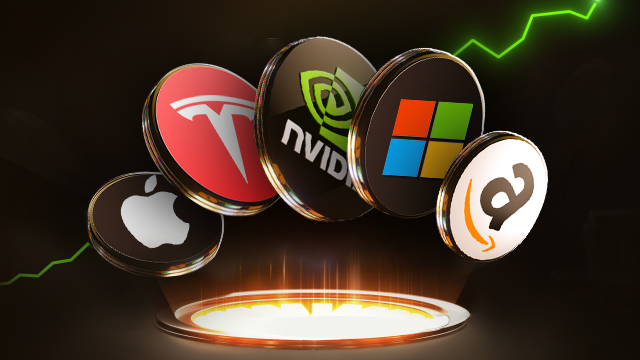SOXS250502C17000
- 0.04
- 0.000.00%
Direxion Daily Semiconductor Bear 3x Shares ETF Newsroom
Trump Rules Out Scaling Back Tariffs to Jump Start China Trade Talks
FOMC Keeps Fed Funds Rate Steady, Citing Rising Risks of Unemployment, Inflation
The largest stock buyback frenzy in history has arrived! In the midst of uncertainty, companies choose to "buy the dip" on themselves.
According to Deutsche Bank, S&P 500 Index constituent companies are expected to buy back $192 billion worth of Stocks in the coming months, the highest single-week record since 1995. Under the shadow of uncertainties such as trade tariffs, companies prefer to deploy large Cash reserves through buybacks.
FOMC Preview: When Will Powell Turn Dovish Amid Tariff Tensions?
Despite the tariff disputes, should one still stick to U.S. stocks? Morgan Stanley provides five major investment recommendations.
① Should one choose Large Cap stocks or Small Cap stocks? Should one choose industrial stocks or Consumer stocks? Should one still remain committed to U.S. stocks? ② Morgan Stanley U.S. stock strategist Wilson offers five investment recommendations to investors to address Global trade risks.
After Buffett "hands over the baton", Berkshire has made substantial bottom-fishing purchases, while retail investors gamble on the enduring faith in the "stock god".
On Monday, retail investors invested more than 24 million dollars in Berkshire Hathaway Class B Stocks.
Goldman Sachs outlook for the May Federal Reserve meeting: the threshold for interest rate cuts is higher than in 2019, and it is necessary to wait for employment and other hard data to weaken.
Analysts including Jan Hatzius from Goldman Sachs have stated that inflation and inflation expectations based on surveys are currently much higher, and decision-makers need to see more compelling evidence of an economic slowdown before taking action. The strongest argument for interest rate cuts would be if Federal Reserve officials believe that data indicates the unemployment rate may continue to rise, which means that other signs such as rising unemployment, weak wage growth, and companies becoming cautious or weak demand growth need to be observed.
AMD Shares Rise in Extended Trading as Earnings, Outlook Beat Estimates
Canadian Prime Minister Carney Tells Trump Canada Isn't for Sale
JPMorgan traders "draw the line": U.S. stocks first break 6000, then hit a new low!
JPMorgan expects that, driven by factors such as the activation of CTA strategy and accelerated Share Buybacks, the S&P 500 Index will first challenge the 6000-point mark. However, afterwards, if investors hold a pessimistic view on the mid-term outlook under high tariffs, the market may retest low levels. JPMorgan agrees with the current widespread view of an economic recession and anticipates a significant decline in hard data such as non-farm employment and retail sales in the next 1-2 months.
The most profitable investment Buffett made in his life came from the "changes" in the last ten years of his career.
Buffett stated that the wealth created for Berkshire by Apple's CEO Cook far exceeds his own. Previously, Buffett had consistently avoided technology stocks until he made an exception and invested in Apple in 2016, resulting in significant returns for Berkshire.
Trump Proposes Slashing $163 Billion in Government Programs, While Boosting Military Spending
Nvidia Stock Jumps After Microsoft, Meta Signaled Continued AI Spending
Super Micro Put Options Volume Doubles as Stock Tanks: Options Chatter
US PCE Inflation Cooled in March Before Much of Trump's Tariffs Took Effect
Express News | US Mar. Core PCE Price Index YoY +2.60% Vs +2.60% Forecast, Prior +3.00%
Trump has criticized Powell again, this time without naming him.
A week after claiming he had no intention of firing Powell, Trump again publicly criticized the Federal Reserve, stating, "We have a Federal Reserve that is not performing well," and believes he understands interest rates "better than he does."
Consumer Confidence Sinks for Fifth Month in a Row to Lowest Since May 2020
U.S. Trade Deficit in Goods Soars to All-time High as Businesses Aimed to Beat Trump Tariffs
A JPMorgan survey indicates that the S&P 500 Index has peaked this year, but investors remain bullish on the Magnificent 7.
① A JPMorgan survey shows that 93% of investors believe the S&P 500 Index will hover around 6000 points or lower in the next 12 months, with 40% expecting it to remain within the 5000-5500 points Range; ② Respondents unanimously believe that trade wars and tariff uncertainties will trigger economic consequences, with 61% expecting the USA economy to face stagflation in the next 12 months.

